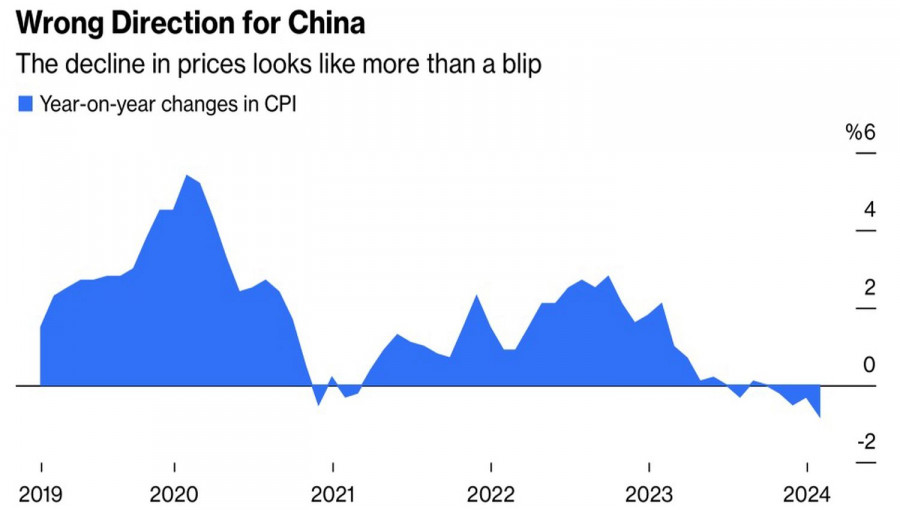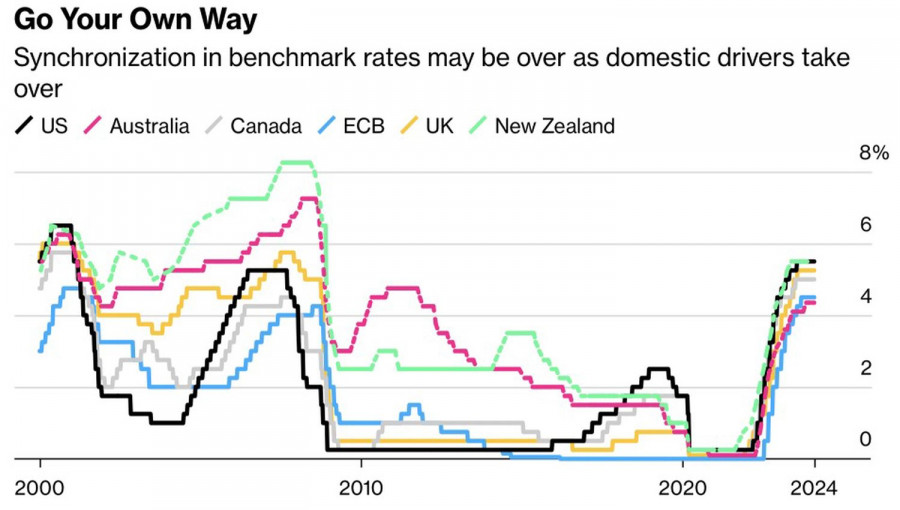It's too beautiful to be true. Those who bet on further strengthening of the U.S. dollar against major world currencies point to American exceptionalism. Investors are increasingly convinced that instead of experiencing a soft landing, the U.S. economy is accelerating. But what if the narrative that unfolded at the beginning of 2024 about its gradual slowdown still comes to life? Will the bearish tune for EUR/USD be sung?
The U.S. dollar did not want to strengthen after the release of producer price data for January. The PPI rose by 0.9%, and the core indicator rose by 2%. Both exceeded forecasts, indicating a slowdown in deflationary pressure. However, Federal Reserve officials continue to talk about lowering the federal funds rate in the summer, as Federal Reserve Bank of Atlanta President Raphael Bostic mentioned. And about three acts of monetary expansion in 2024 being the baseline scenario, as Federal Reserve Bank of San Francisco President Mary Daly stated. Why? Does the Federal Reserve consider January inflation statistics to be noise?
In fact, the Central Bank has plenty of reasons to believe that deflation will continue to gain momentum in the coming months. Many believed that with aggressive monetary restraint, it dealt a lethal blow to inflation. However, China cannot cope with deflation, and problems in its real estate sector will impact commodity prices, eventually affecting the U.S. CPI.
Dynamics of inflation in China

Add to this the recovery of supply chains, which eliminated the supply shock, and the growth in productivity in the U.S., and the situation will begin to look as if the Fed is about to celebrate victory over high prices. Indeed, one of the reasons for American exceptionalism is higher labor productivity compared to other countries, thanks to artificial intelligence technologies. If so, companies may not raise prices despite wage growth. That's why CPI increased by 3.1% in January, while PPI increased by only 0.9%.
In Europe, the situation is different. Due to lower productivity, GDP is expanding more slowly. Employers are forced to raise prices in response to wage growth. Risks of inflation divergence in the eurozone are greater than in the U.S. Therefore, the ECB may raise rates later than the Fed. Great news for EUR/USD.
Dynamics of central bank rates

Thus, the reluctance of the U.S. dollar to react to strong producer price statistics, the maintenance of dovish rhetoric by Fed members, and the proximity of market expectations for the timing and scale of monetary expansion to the December FOMC forecasts indicate that many bearish arguments for EUR/USD have played out. Is it time for the euro to start growing?
Technically, on the daily chart of the main currency pair, the formation of a pin bar with a long lower shadow is a signal of the bull's counterattack. Their intentions to take the initiative are confirmed by the 1-2-3 pattern. Moreover, a breakthrough of resistance at 1.079 may serve as a basis for forming long positions on EUR/USD.
The material has been provided by InstaForex Company - www.instaforex.comfrom Forex analysis review https://ift.tt/kMF3s5g
via IFTTT
